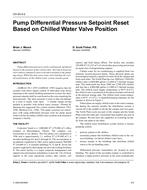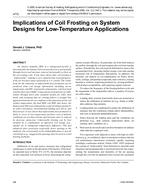The health effects of outdoor exposure to particulate matter (PM) are well-established and are used to set health-based National Ambient Air Quality Standards (NAAQS). Although much less studied to date, indoor exposure to PM is gaining attention as a potential source of adverse health effects. PM found indoors can be particles of outdoor origin that migrate indoors, or from indoor sources. Indoor PM sources include combustion—via cooking, appliance emissions, and the like—and occupant activities, notably secondhand smoke. Indoor PM levels have the potential to exceed outdoor levels and the NAAQS.In response to a request from the US Environmental Protection Agency, the National Academies of Sciences, Engineering, and Medicine conducted a workshop that addressed the potential health risks of indoor exposure to particulate matter and the state of scientific understanding regarding them, focusing on PM2.5 and smaller exposures. It took place in February 2016. The workshop featured invited presentations and discussions regarding the health conditions that are most affected by PM, the attributes of the exposures that are of greatest concern, exposure modifiers, vulnerable populations, exposure assessment, risk management, and gaps in the science.A peer-reviewed Academies report summarizing the workshop will be released in Summer 2016 and a complete description of the activity will not be available until that time. This paper describes the general structure the workshop, providing references to the material available for public distribution at the time of submission. The conference presentation will summarize the results of the workshop, reviewing the issues regarding indoor PM exposure and health, and discussing the major unknowns and research needs identified.
Citation: ASHRAE and AIVC IAQ 2016 Conf
Product Details
- Published:
- 2016
- Number of Pages:
- 4
- Units of Measure:
- Dual
- File Size:
- 1 file , 560 KB
- Product Code(s):
- D-2016IAQ-34


